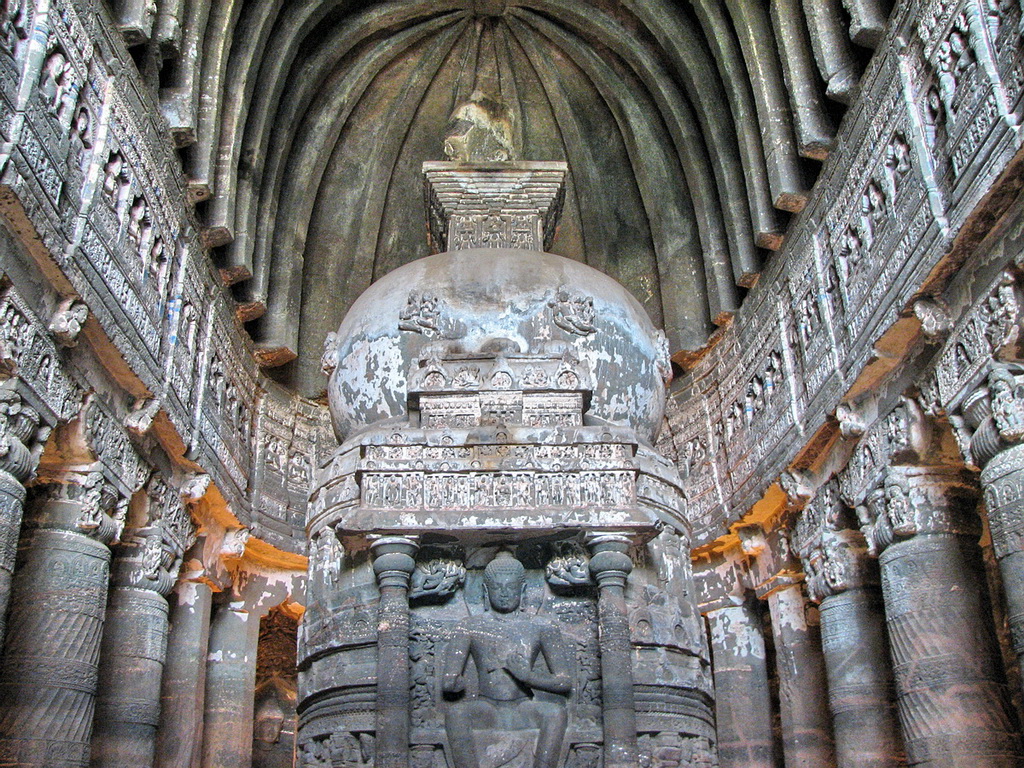Ekavyāvahārika on:
[Wikipedia]
[Google]
[Amazon]
 The Ekavyāvahārika (; ) was one of the
The Ekavyāvahārika (; ) was one of the
 The Ekavyāvahārika (; ) was one of the
The Ekavyāvahārika (; ) was one of the early Buddhist schools
The early Buddhist schools refers to the History of Buddhism in India, Indian Buddhist "doctrinal schools" or "schools of thought" (Sanskrit: ''vāda'') which arose out of the early unified Buddhist monasticism, Buddhist monastic community (San ...
, and is thought to have separated from the Mahāsāṃghika
The Mahāsāṃghika (Brahmi script, Brahmi: 𑀫𑀳𑀸𑀲𑀸𑀁𑀖𑀺𑀓, "of the Great Sangha (Buddhism), Sangha", ) was a major division (nikāya) of the early Buddhist schools in India. They were one of the two original communities th ...
sect during the reign of Aśoka.
History
Relationship to Mahāsāṃghika
Tāranātha viewed the Ekavyāvahārikas, Lokottaravādins, and Gokulikas as being essentially the same. He even viewed ''Ekavyāvahārika'' as being a general term for the Mahāsāṃghikas. The Ekavyāvahārikas, Gokulikas, and Lokottaravādins are the three groups that emerged from the first split in the Mahāsāṃghika sect. A.K. Warder notes that the Ekavyāvahārikas were hardly known in later times and may have simply have been considered part of the Mahāsāṃghika.Early history
The 6th century CE Indian monk Paramārtha wrote that 200 years after the parinirvāṇa of the Buddha, much of the Mahāsāṃghika school moved north of Rājagṛha, and were divided over whether theMahāyāna
Mahāyāna ( ; , , ; ) is a term for a broad group of Buddhist traditions, Buddhist texts#Mahāyāna texts, texts, Buddhist philosophy, philosophies, and practices developed in ancient India ( onwards). It is considered one of the three main ex ...
teachings should be incorporated formally into their Tripiṭaka
There are several Buddhist canons, which refers to the various scriptural collections of Buddhist sacred scriptures or the various Buddhist scriptural canons.
. According to this account, they split into three groups based upon the relative manner and degree to which they accepted the authority of these Mahāyāna texts. According to Paramārtha, the Ekavyāvahārikas accepted the Mahāyāna sūtras
The Mahayana sutras are Buddhist texts that are accepted as wikt:canon, canonical and authentic Buddhist texts, ''buddhavacana'' in Mahayana, Mahayana Buddhist sanghas. These include three types of sutras: Those spoken by the Buddha; those spoke ...
as the words of the Buddha (''buddhavacana
Buddhist texts are religious texts that belong to, or are associated with, Buddhism and Schools of Buddhism, its traditions. There is no single textual collection for all of Buddhism. Instead, there are three main Buddhist Canons: the Pāli C ...
'').
Doctrines
Forty-eight theses
The ''Samayabhedoparacanacakra'' of Vasumitra regards the Ekavyāvahārikas, Gokulikas, and Lokottaravādins as being doctrinally indistinguishable. According to Vasumitra, 48 theses were held in common by these three Mahāsāṃghika sects. Of the 48 special theses attributed by the ''Samayabhedoparacanacakra'' to these sects, 20 points concern the supramundane nature ofbuddha
Siddhartha Gautama, most commonly referred to as the Buddha (),*
*
*
was a wandering ascetic and religious teacher who lived in South Asia during the 6th or 5th century BCE and founded Buddhism. According to Buddhist legends, he was ...
s and bodhisattva
In Buddhism, a bodhisattva is a person who has attained, or is striving towards, '' bodhi'' ('awakening', 'enlightenment') or Buddhahood. Often, the term specifically refers to a person who forgoes or delays personal nirvana or ''bodhi'' in ...
s. According to the ''Samayabhedoparacanacakra'', these four groups held that the Buddha is able to know all ''dharma
Dharma (; , ) is a key concept in various Indian religions. The term ''dharma'' does not have a single, clear Untranslatability, translation and conveys a multifaceted idea. Etymologically, it comes from the Sanskrit ''dhr-'', meaning ''to hold ...
s'' in a single moment of the mind. Yao Zhihua writes:
Trascendent speech
The name of the Ekavyāvahārikas refers to their doctrine that the Buddha speaks with a single and unified transcendent meaning. They emphasized the transcendence of theBuddha
Siddhartha Gautama, most commonly referred to as the Buddha (),*
*
*
was a wandering ascetic and religious teacher who lived in South Asia during the 6th or 5th century BCE and founded Buddhism. According to Buddhist legends, he was ...
, asserting that he was eternally enlightened and essentially non-physical. Just as the words of the Buddha were held to be spoken with one transcendent meaning, the Four Noble Truths
In Buddhism, the Four Noble Truths (; ; "The Four Arya (Buddhism), arya satya") are "the truths of the noble one (the Buddha)," a statement of how things really are (Three marks of existence, the three marks of existence) when they are seen co ...
were understood to be perfectly realized with one wisdom.
Fundamentally pure mind
The Ekavyāvahārikas held that sentient beings possessed an originally or fundamentally pure mind, but that it has been encumbered and obscured by suffering. This conception of the nature of the mind as being fundamentally the same as that of the Buddha, has been identified with the Mahāyāna doctrines of Buddha-nature and the Buddha's Dharmakāya, as well as compared favorably with doctrines in Mahāyāna sūtras such as the '' Lotus Sūtra'' and the '.Baruah, Bibhuti. ''Buddhist Sects and Sectarianism.'' 2008. p. 90References
See also
*Early Buddhist schools
The early Buddhist schools refers to the History of Buddhism in India, Indian Buddhist "doctrinal schools" or "schools of thought" (Sanskrit: ''vāda'') which arose out of the early unified Buddhist monasticism, Buddhist monastic community (San ...
* Nikaya Buddhism
* Schools of Buddhism
{{Buddhism topics
Nikaya schools
Mahāsāṃghika
Early Buddhist schools